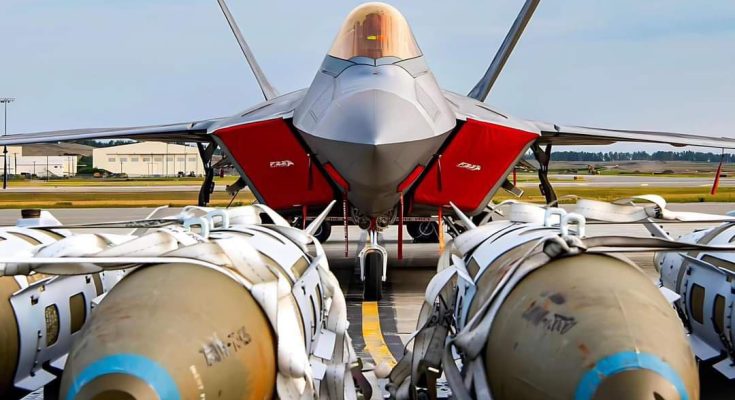The F-35 Lightning II, renowned for its stealth capabilities, advanced avionics, and multirole versatility, has recently taken on a new, crucial role within modern defense strategy: nuclear bomber. Initially developed as a fighter aircraft with a focus on air superiority, close air support, and strike missions, the F-35 has evolved into a platform capable of carrying and delivering nuclear weapons, expanding its role within NATO and U.S. defense frameworks.
This new capability comes at a time when geopolitical tensions are rising and the need for flexible, reliable nuclear deterrence is paramount. The F-35’s transition into a nuclear-capable bomber was officially confirmed with the introduction of the aircraft’s ability to carry and deliver B61 nuclear bombs—a type of tactical nuclear weapon developed by the U.S. Department of Energy. The F-35’s nuclear mission enhances its already formidable capabilities and provides a significant upgrade to its role in national and allied defense strategies.
Advanced Nuclear Capabilities
The integration of nuclear capabilities into the F-35 is no small feat. The aircraft is now certified to carry the B61-12 bomb, the latest and most advanced variant of the B61 series, which is designed for flexible use in a variety of military scenarios. The B61-12 has a reduced yield compared to previous versions, allowing for a more tailored response to threats while minimizing collateral damage. This precision capability makes the F-35 an ideal platform for such weapons, as it can engage in precise strikes with minimal risk of unintended escalation.
The F-35’s advanced avionics and stealth features are also key in its role as a nuclear bomber. Its low radar profile, ability to operate in contested airspace, and advanced electronic warfare systems make it an ideal delivery system for nuclear weapons. The aircraft’s low observability ensures that it can penetrate advanced enemy air defenses, making it harder for adversaries to intercept or prevent a nuclear strike.
Strategic Importance and Versatility
One of the primary reasons the F-35 has been chosen to carry nuclear weapons is its multirole versatility. The aircraft was designed to serve various functions, from air superiority to close air support and precision strike. By adding a nuclear strike capability, the F-35 becomes an even more valuable asset, as it can seamlessly transition between conventional and nuclear roles based on mission requirements. This flexibility is particularly important in modern military strategies, where the ability to adapt to a rapidly changing threat landscape is essential.
The F-35’s interoperability with NATO and allied forces further enhances its value as a nuclear bomber. As countries across Europe and the world adopt the F-35, the aircraft can integrate into a nuclear sharing arrangement, which involves the transfer of nuclear weapons to NATO allies for joint deployment. The F-35’s ability to operate in coordination with allied forces ensures a unified and capable nuclear deterrence posture, strengthening collective defense against potential adversaries.
The Future of the F-35 as a Nuclear Bomber
The F-35’s new role as a nuclear bomber comes amid ongoing concerns about the evolving nature of global threats, particularly from nations like Russia and China, which continue to develop advanced nuclear and conventional capabilities. The integration of nuclear weapons into the F-35’s mission profile ensures that it remains a key player in the U.S. and NATO’s deterrence strategies.
While there are concerns about the costs and risks associated with nuclear weapons modernization, the F-35’s ability to serve as a flexible, stealthy nuclear bomber enhances the overall deterrence capabilities of the forces that operate it. With its combination of advanced stealth, precision strike capabilities, and nuclear delivery systems, the F-35 is poised to play a critical role in maintaining a credible nuclear deterrent in the 21st century.
In conclusion, the F-35’s transformation into a nuclear bomber represents a significant milestone in the evolution of modern combat aircraft. It enhances the aircraft’s versatility and strategic importance, reinforcing its role as a cornerstone of the U.S. and NATO defense systems. The ability to carry and deliver nuclear weapons adds another layer to the F-35’s already impressive capabilities, ensuring it remains a dominant force in both conventional and nuclear warfare.



